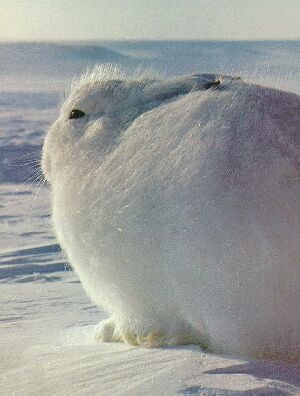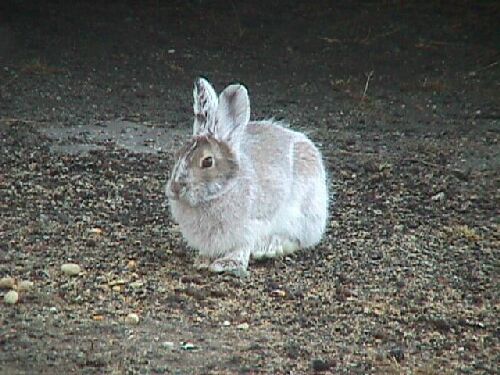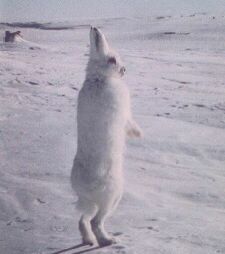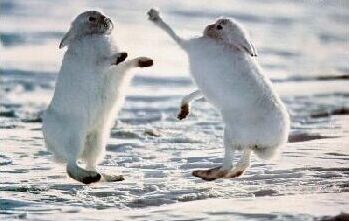|
|
 The arctic hare tucks in its ears and tail and sits for hours in the freezing wind. |
HOME - RANGEThe arctic hare lives throughout the tundra of Canada from Newfoundland to the Northwest Territories. It is also found on Arctic islands and in Greenland. The Arctic hare lives in both mountainous and lowland areas. It likes places where plants grow quickly during the short summer season. For the winter it prefers sheltered areas where it does not have to dig in deep snow to search for food.

APPEARANCEFOODTHE YOUNG The young are born in late May, June, or July, depending on where they live. The farther north they are, the later the babies are born. Females may produce a second litter in one season. Litter size is from four to eight babies. The gray-brown babies (called leverets) are born in a small dent in moss or grass. Dry plants or fur from the female lines the nest. The nest is often hidden behind a rock or bush. The babies are covered with fur and their eyes are wide open.
The mother does not leave her babies for the first 2 to 3 days.
By the third day the young are able to lie very still. They almost look
like the rocks and grass around them .
The young gain 45 to 50 grams per day in their first
month and no longer need mother's milk by the time they are a month old.
By September they are the size of the adults.
BEHAVIOR / ADAPTATIONWhen alarmed they rise up on their hind legs to look for danger and then bound off very quickly . Hopping up on their hind legs like a kangaroo, they can reach speeds of 64 km. per hour. The hare can swim across narrow streams.

ENEMIESPROTECTION
Hares may fight. They box, scratch and snap at one another but they do not bite. |
